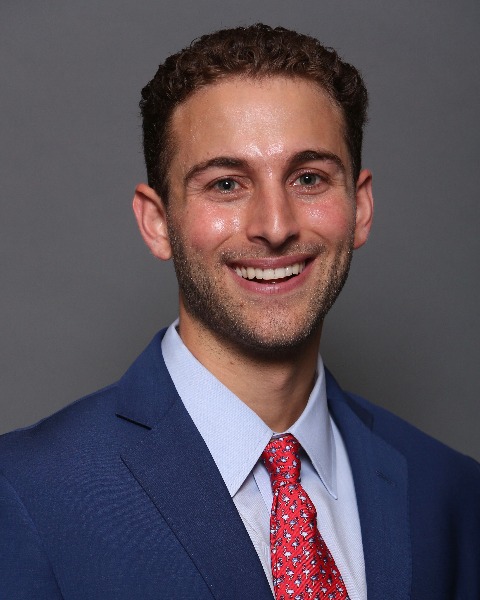Back
Poster Session C - Monday Afternoon
C0244 - The Efficacy and Safety of Treatment Outcomes for Refractory Benign Esophageal Strictures Using a Novel Combination of Needle-Knife Stricturoplasty, Balloon Dilation, and Steroid Injection
Monday, October 24, 2022
3:00 PM – 5:00 PM ET
Location: Crown Ballroom

Andrew Canakis, DO
University of Maryland Medical Center
Baltimore, MD
Presenting Author(s)
Introduction: Benign esophageal strictures that are refractory to standard endoscopic techniques can significantly impair a patient’s quality of life leading to complications such as malnutrition and weight loss. When repeat dilations fail to achieve an adequate luminal diameter or resolve dysphagia, further therapy with needle knife or steroid injections are needed. However, patients can still clinically fail. In an effort to manage such strictures we employed a novel triple combination of needle-knife stricturoplasty, balloon dilation, and steroid injection to assess clinical outcomes and safety.
Case Description/Methods: This was a single center retrospective study of all adult patients with benign strictures that were refractory to conventional endoscopic therapy and removable self-expanding metal stenting. The triple therapy consisted of at least four longitudinal needle knife incision followed by balloon dilation and then targeted four quadrant intralesional steroid injections (Figure 1). Primary success was defined as a 50% reduction in repeat endoscopic therapy needed. Secondary outcomes included periodic dilation index, esophageal diameter changes, technical success, and complications.
Four patients (average age 49.7 years, average body mass index 22.8 kg/m2) underwent endoscopic therapy for complex benign strictures using our triple therapy technique (Table 1). Stricture etiologies included peptic strictures (n= 3) and an anastomotic stricture (n=1). All patients previously required esophageal stenting (range 1-3). There was 100% technical success rate with no adverse events. The average diameter of the esophagus before and after triple therapy was 4.2 ± 1.63 mm and 13 ± 1.36 mm, respectively. The periodic dilation index was 6.3 (range 12-2) before and 1.5 (range 5–0) after triple therapy. The mean length of follow up was 316 days (range 116-425).
Discussion: Triple combination therapy may be useful in benign strictures that are refractory to standard techniques. We do recommend needle knife before dilation to enhance the efficacy of steroid injections. In light of our findings, this method should be considered when strictures are refractory after 2-3 dilation sessions and/or stent therapy. Larger studies are needed to validate these findings and identify predictive factors that can enhance clinical success using this novel combination.
Case Description/Methods: This was a single center retrospective study of all adult patients with benign strictures that were refractory to conventional endoscopic therapy and removable self-expanding metal stenting. The triple therapy consisted of at least four longitudinal needle knife incision followed by balloon dilation and then targeted four quadrant intralesional steroid injections (Figure 1). Primary success was defined as a 50% reduction in repeat endoscopic therapy needed. Secondary outcomes included periodic dilation index, esophageal diameter changes, technical success, and complications.
Four patients (average age 49.7 years, average body mass index 22.8 kg/m2) underwent endoscopic therapy for complex benign strictures using our triple therapy technique (Table 1). Stricture etiologies included peptic strictures (n= 3) and an anastomotic stricture (n=1). All patients previously required esophageal stenting (range 1-3). There was 100% technical success rate with no adverse events. The average diameter of the esophagus before and after triple therapy was 4.2 ± 1.63 mm and 13 ± 1.36 mm, respectively. The periodic dilation index was 6.3 (range 12-2) before and 1.5 (range 5–0) after triple therapy. The mean length of follow up was 316 days (range 116-425).
Discussion: Triple combination therapy may be useful in benign strictures that are refractory to standard techniques. We do recommend needle knife before dilation to enhance the efficacy of steroid injections. In light of our findings, this method should be considered when strictures are refractory after 2-3 dilation sessions and/or stent therapy. Larger studies are needed to validate these findings and identify predictive factors that can enhance clinical success using this novel combination.

